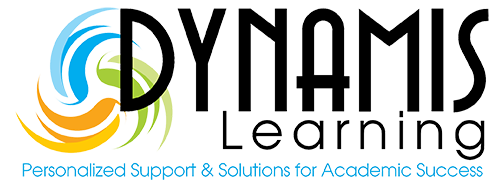 Have you ever heard of a ‘lightbulb’ moment? I am sure you have! It’s one of those moments we experience where a thought or feeling randomly pops into our heads that answers or solves an ongoing dilemma in our lives. It’s a sudden, intuitive feeling that appears to have come from nowhere. It’s that idea which wasn’t previously anywhere on our radar and we can’t seem to explain its origin. As adults, we’ve all had that defining moment where we suddenly knew the right things to do or say. But what about children? Do they have them too but are just unable to recognize or verbalize them? What if there were a way to teach children how to attain this type of inner awareness? Certainly, it would be valuable to teach them how to listen to their gut and distinguish the good feelings from the bad, right?
Have you ever heard of a ‘lightbulb’ moment? I am sure you have! It’s one of those moments we experience where a thought or feeling randomly pops into our heads that answers or solves an ongoing dilemma in our lives. It’s a sudden, intuitive feeling that appears to have come from nowhere. It’s that idea which wasn’t previously anywhere on our radar and we can’t seem to explain its origin. As adults, we’ve all had that defining moment where we suddenly knew the right things to do or say. But what about children? Do they have them too but are just unable to recognize or verbalize them? What if there were a way to teach children how to attain this type of inner awareness? Certainly, it would be valuable to teach them how to listen to their gut and distinguish the good feelings from the bad, right?
Well, this is our next piece of the mindfulness puzzle that we’ve been constructing over the last several weeks. Children who are aware of what makes them feel good versus what doesn’t, lean towards being more happy and motivated individuals. Learning to be able to verbalize when something is too much is an important skill which can lead children towards developing a better aptitude for resolution. Even though this may seem like a formidable challenge, it can easily be taught using mindfulness and meditative techniques.
First, you need to get your child in the habit of paying attention to their bodies, minds and surroundings. One such awareness exercise you can conduct with your children is called the Bell Listening Exercise. Here, you ring a bell and ask the kids to listen closely to the ringing sound. Have them remain silent and raise their hands when they can no longer hear the vibrating sound of the bell. Next, they must remain silent for one minute. Instruct them to then pay close attention to the other sounds they can hear once the ringing has stopped. Finally, go around in a circle and ask the kids to share the sounds they noticed during that time. This exercise is not only fun and gets the kids excited about sharing their experiences with other but really helps them to develop inner awareness and to connect to the present moment. So many times, we react based on our immediate feelings instead of being able to stop and recognize the moment for what it is, and then let it pass. Many a conflict can be deterred if we are just able to pause and become aware.
Another engaging mindfulness exercise which increases this type of recognition is called Squish and Relax Meditation. Here, the children are to lie down, close their eyes and then ‘squish and squeeze’ every muscle in their  bodies as tightly as they can. Have them squish their toes, then their feet, the muscles in their legs, their stomach, all the way up their bodies to the shoulders and head. They must hold each ‘squished’ position for several seconds before relaxing. This fun activity helps to loosen up the body and mind, and is a practical way to get them to relate to the art of ‘being present’.
bodies as tightly as they can. Have them squish their toes, then their feet, the muscles in their legs, their stomach, all the way up their bodies to the shoulders and head. They must hold each ‘squished’ position for several seconds before relaxing. This fun activity helps to loosen up the body and mind, and is a practical way to get them to relate to the art of ‘being present’.
Check out the links for more fun ways to help your children develop awareness. These simple, yet effective mindfulness activities are great ways to get your children in the habit of being alert to their bodies, emotions, and surroundings, thus leading to increased thoughtfulness and problem-solving abilities. Although you may think this frivolous and feel skeptical, what have you go to lose? Just give it a try. Both you and your child might be happily surprised by the results.
Click below to get the 5 important mindfulness tips we have been sharing with people over the last several weeks.
